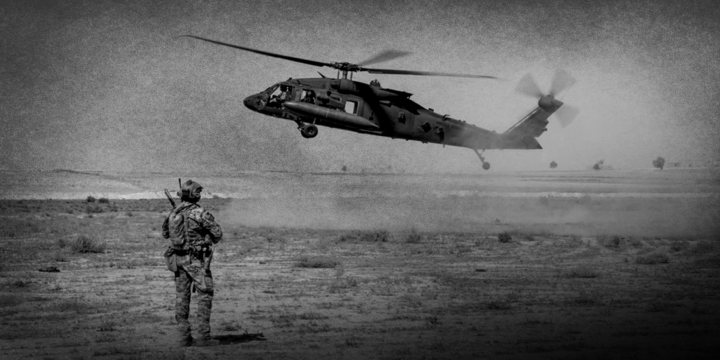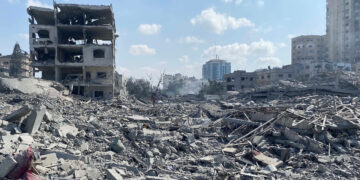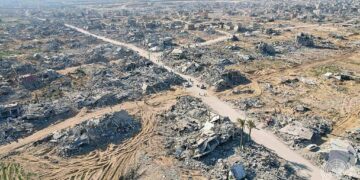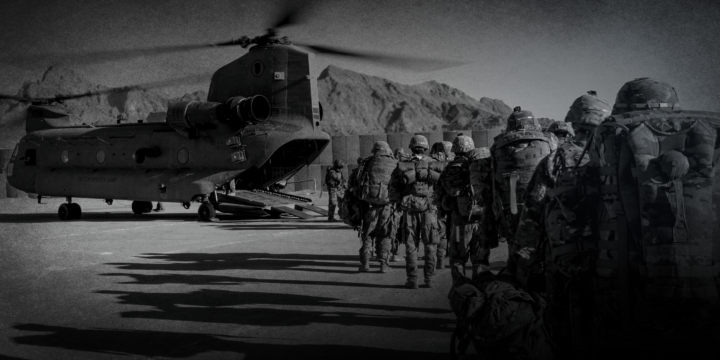December 23, 2024
Wait and see: A post-Assad Syria
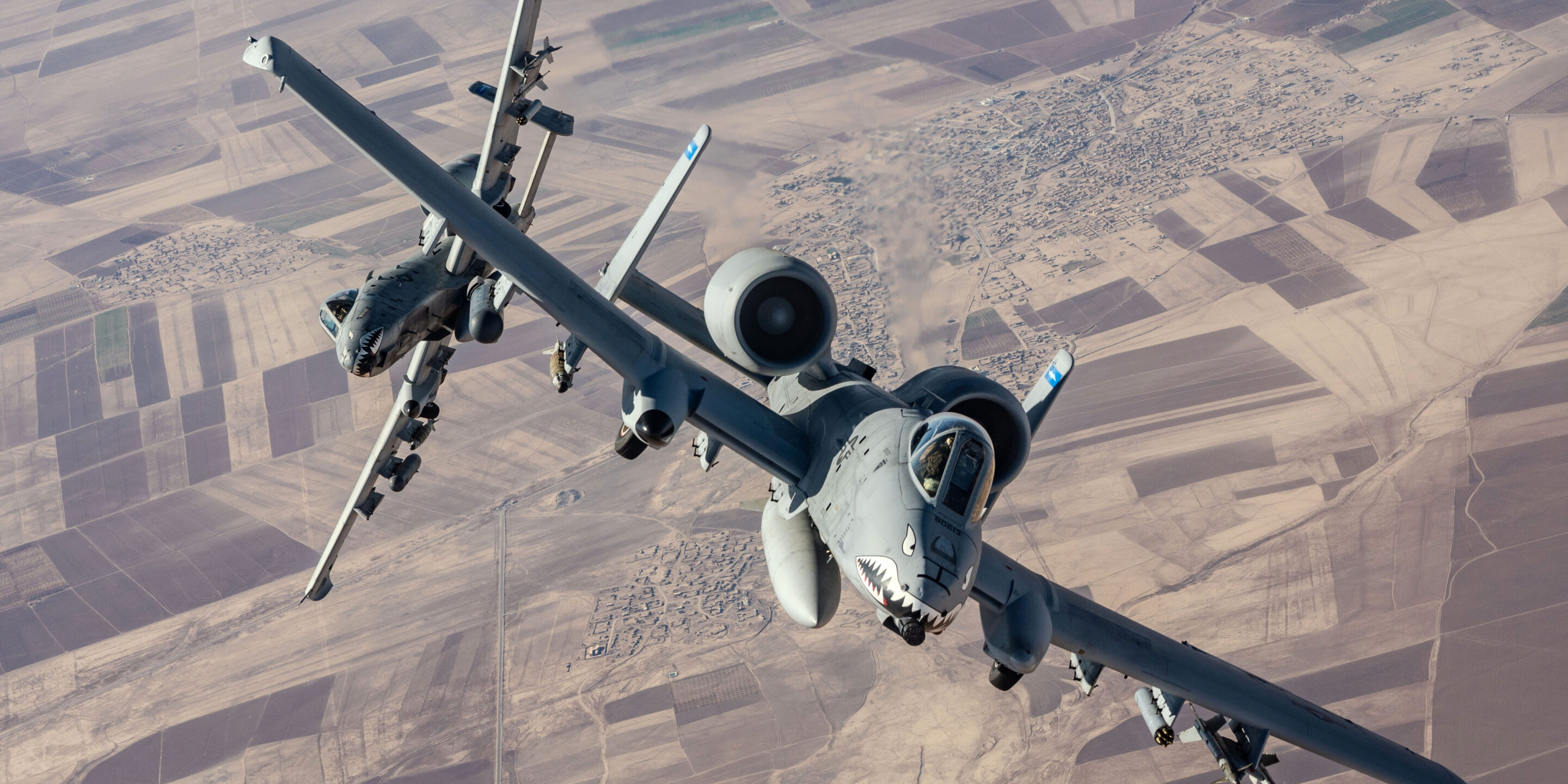
The stunning overthrow of Bashar al-Assad by the rebel group Hayat Tahrir al-Sham (HTS) raises new questions about U.S. interests and policy in Syria. Should the U.S. maintain or even increase its force presence beyond the 2,000 troops deployed there to prevent the Islamic State in Iraq and Syria (ISIS) from re-emerging?1Lolita Baldor and Tara Copp, “Pentagon Says It Doubled the Number of US Troops in Syria Before Assad’s Fall,” AP News, December 19, 2024, https://apnews.com/article/syria-us-troops-assad-tice-israel-35ac28d9c95a568828986da011bc02f1. Should the United States recognize the new government and provide humanitarian assistance to rebuild the country, even though HTS has a legacy of terrorism? Should HTS’s official designation as a terrorist group be lifted? Is it time to remove the crippling sanctions imposed on Syria now that the original target of those sanctions—the Assad regime—is gone?
The emerging consensus in Washington is that the United States should do all of those things—and perhaps more—lest Syria become a failed state, unable to establish order, whose internal instability would then leak into neighboring countries.2Sam Heller, “How to Hold Syria Together,” Foreign Affairs, December 16, 2024, https://www.foreignaffairs.com/syria/how-hold-syria-together; Daniel Byman, “Al-Assad’s Syria Was Brutal. Will What Comes Next Be Better?,” New York Times, December 9, 2024, https://www.nytimes.com/2024/12/09/opinion/assad-syria-whats-next.html. But that consensus is wrong. Of course, no one wants to see a humanitarian disaster engulf Syria, which has already suffered through 13 years of civil war. But the threat to the United States of state failure in Syria is exaggerated. And behind the understandable impulse to help lurks the real dangers of nation-building.
Instead, the United States should take this opportunity to withdraw its forces from Syria before conditions deteriorate. Their safety is at risk in a fluid environment that is about to get much more dangerous. The mission of containing ISIS can pass to local actors, such as the Kurdish Syrian Democratic Forces (SDF) and HTS itself, who have the greatest stake in keeping ISIS from reconstituting. If absolutely necessary, U.S. forces based over-the-horizon could still strike ISIS targets in Syria without troops being left on the ground.
The United States should also resist the urge to assist HTS in reconstructing Syria at this time, despite its sympathy for the Syrian people. The country is in the midst of a revolution and events are still unfolding. Most importantly, economic aid is no panacea for achieving what is, at its core, a political task—forging a stable, new Syria from an ethno-religiously fractured society.
The U.S. must be realistic about what could reasonably be accomplished by investing in HTS now. In truth, even early, generous aid may not save Syria. The danger is that Washington will forget this, continue to throw resources at the problem, and “buy” responsibility for Syria in Colin Powell’s Pottery Barn style, despite not being the ones who broke it.
Events in Syria do not threaten the United States
As of writing, U.S. officials have spoken to HTS and may be formulating a deal to trade U.S. assistance in exchange for promises of responsible government.3Edward Wong, Christina Goldbaum, and Michael Crowley, “Senior U.S. Diplomats Meet With Governing Militias in Syria,” New York Times, December 20, 2024, https://www.nytimes.com/2024/12/20/us/politics/us-diplomats-syria.html. But in truth, whether HTS governs inclusively—whether it even establishes a stable regime at all—will matter little because Syria is a poor, weak country wrecked by years of civil war. Even if a hostile regime took over—whether that turns out to be HTS or anyone else—it would lack the economic and military power to threaten the United States.
Of course, the “real” threat, according to Washington, is that Syria could become a “safe haven” for terrorism against the United States and its allies. The fear is that ISIS or other militants could use a post-Assad vacuum to operate with impunity if HTS fails to establish control, or worse, that terrorists could garner tacit or tangible support from the new government, similar to how the Taliban regime permitted al-Qaeda activities in Afghanistan prior to 9/11.
But the “safe havens” argument for force presence has long been misguided.4Daniel Davis, “Debunking the Safe Haven Myth,” Defense Priorities, July 1, 2024, https://www.defensepriorities.org/explainers/debunking-the-safe-haven-myth/. In fact, the U.S. withdrew from its two-decade occupation of Afghanistan in 2021 without causing a resurgence of terrorism. And mounting sophisticated attacks from broken, dysfunctional environments is nearly impossible, which is why spectacular ISIS attacks in Europe, such as in Paris in 2015 and Brussels in 2016, were planned in Belgium, not Syria or Iraq.5Risa Brooks, “Dispelling the Safe Haven Myth: Why Americans Are Safer Than They Think,” Notre Dame International Security Center, February 26, 2019, https://soundcloud.com/user-982486961/risa-brooks-dispelling-the-terrorist-safe-haven-myth-why-americans-are-safer-than-they-think; Aaron Williams et al., “How Two Brussels Neighborhoods Became ‘A Breeding Ground’ for Terror,” Washington Post, April 1, 2016, https://www.washingtonpost.com/graphics/world/brussels-molenbeek-demographics/.
Chaos in Syria would be tragic, but because it would occur halfway around the world, the strategic consequences to the U.S. would be negligible—except for the existing deployment of 2,000 U.S. troops in Syria, whose safety would be threatened anew. Unfortunately, that legacy presence runs the significant risk of drawing the United States into unfolding events, and for that reason should be quickly withdrawn.
U.S. troops originally deployed to Syria in 2015 to defeat ISIS and train local partners in counterterrorism, but they were not brought home upon the completion of their mission in 2019 when the Islamic State ceased to exist as a territorial unit.
Now those troops are magnets for unnecessary attention by bad actors. They remain highly vulnerable to attack by Iran and its proxies operating out of Iraq—actors that would otherwise be too weak to reach U.S. military targets. Since the October 7, 2023 Hamas attack on Israel, U.S. troops in Syria have come under attack by Iran and its proxies at least 125 times, seriously injuring numerous troops and contractors.6Alison Bath, “US Forces Are Under Regular Attacks by Militants at Base Near Syrian Government Airfield,” Stars and Stripes, November 24, 2024, https://www.stripes.com/theaters/middle_east/2024-11-25/syria-iraq-iran-troops-attacked-15959635.html Three U.S. soldiers were also killed by an Iranian proxy attack in Jordan, just across the border with Syria, in January 2024.
The fluid post-revolutionary environment in Syria poses its own dangers. Revolutions are famously unpredictable and often prompt interventions by other states, raising the prospects of mistakes and miscalculations.7Stephen M. Walt, Revolution and War (Ithaca, N.Y.: Cornell University Press, 1996), 5–6. The U.S. should step back to avoid such risks, not embrace them. Yet Washington tempted fate immediately after Assad’s fall by bombing ISIS targets in areas where Russian troops had recently withdrawn.8Nicholas Slayton and Jeff Schogol, “US Warplanes Strike 75 ISIS Targets in Syria: ‘We Saw the Opportunity and We Took It,’” Task & Purpose, December 8, 2024, https://taskandpurpose.com/news/air-force-syria-isis-strikes/. The risks of accidental escalation with Russia, Iran, and other states operating in Syria are easy to imagine. Deconfliction problems could also arise with Turkey, which appears poised to invade Kurdish areas of Syria where U.S. military advisors operate.9Lara Seligman and Alexander Ward, “U.S. Fears Military Buildup by Turkey Signals Preparations for Incursion Into Syria,” Wall Street Journal, December 17, 2024, https://www.wsj.com/world/middle-east/u-s-fears-military-buildup-by-turkey-signals-preparations-for-incursion-into-syria-1c2e88e9. Turkey considers Kurdish rebels to be a threat, despite U.S. support for them, and that conflict of interest has even led to “NATO-on-NATO proxy violence” between Turkish-supported rebels and U.S.-backed Kurds in the past.10Alex Plitsas, “What Is Going On in Syria and What the Hell Does It Mean for US Troops?,” Task & Purpose, December 18, 2024, https://taskandpurpose.com/opinion/assad-regime-syria-us-troops/.
Israeli actions since Assad’s fall further complicate the situation. IDF forces have occupied the strategic high ground on Mt. Hermon, expanded into and beyond the buffer zone surrounding the Golan Heights, and conducted heavy airstrikes to destroy the military remnants of the former regime.11Vivian Yee, “Israel Strikes Military Targets in Syria,” New York Times, December 15, 2024, https://www.nytimes.com/2024/12/15/world/middleeast/israel-strikes-syria-military.html. Whether HTS and Israel will fight over these incursions remains to be seen, but the potential certainly exists. Of course, Israel’s presence does not threaten the U.S., but the more states that get involved, the greater the miscalculation risks.
Finally, it is important to keep in mind that the 2015 anti-ISIS mission was itself the legacy of a massive strategic miscalculation: the Iraq war. ISIS would never have existed had the United States not invaded Iraq in 2003, deposed its brutal dictator Saddam Hussein, and foolishly tried to nation-build a liberal democracy in a fractured country with no tradition of popular government. Not only was that policy destined to fail, but it predictably fueled an anti-American backlash and enabled the rise of ISIS, which was initially composed of Baathists from the former Iraqi regime.12Tim Arango and Eric Schmitt, “U.S. Actions in Iraq Fueled Rise of a Rebel,” New York Times, August 10, 2014, https://www.nytimes.com/2014/08/11/world/middleeast/us-actions-in-iraq-fueled-rise-of-a-rebel.html. The fact that the U.S. military mission in Syria was rooted in the failures of the Iraq war should serve as a cautionary tale about the dangers of imprudent interventions.
The U.S. should not alter its assistance policy, yet
It is too soon to know how the change of government will unfold, but based on historical cases of revolutions, the transition to a consolidated post-Assad Syria is unlikely to be smooth. That is exactly why some have argued that the United States should try to stabilize the situation by quickly lifting sanctions against Syria, de-listing HTS as a terrorist group, and sending aid. In addition to the humanitarian benefits, the argument goes, U.S. support might prevent Syria from becoming a failed state and could secure the U.S. a seat at the table for influencing the country’s future.13Jonathan Lord, “Washington Needs a New Syria Policy Right Now,” Foreign Policy, December 9, 2024, https://foreignpolicy.com/2024/12/09/assad-syria-civil-war-hts-terrorism/.
But trying to steer Syria’s post-revolutionary direction would be a fool’s errand, especially this early in the process. Instead, Washington should remain cautious and let events play out before changing its stance, because the downside risks of deeper involvement are substantial.
First, it makes little sense to back HTS, or any other group, until they have demonstrated some staying power. Just because HTS and its leader, Ahmed al-Sharaa (also known by his nom de guerre Mohammed al-Jolani), rule today does not mean they will rule tomorrow. Revolutions are usually followed by long periods of violence and upheaval before a settled status quo emerges. The groups that start revolutions are seldom the ones still in charge by the bitter end.
For example, the French Revolution spanned more than a decade, from 1787–1799, with successive regimes coming to power only to be violently deposed—including that of Maximilien de Robespierre, the architect of the Reign of Terror, who himself was executed by subsequent revolutionaries. The 1917 Russian Revolution, the 1949 Chinese Revolution, and the 1979 Iranian Revolution were all followed by turmoil and violence as various substate factions competed for control. The American Revolution stands out as a relatively peaceful exception, but even still, it took years of upheaval before the present constitutional system was established.
Syria is likely to be plagued by similar upheaval. The U.S. could invest in supporting HTS only to see it overthrown weeks or months later. At best, that would embarrass the United States and waste resources. At worst, it could pressure Washington into deeper involvement, due to the misguided fear that U.S. credibility and prestige would suffer should the government fall.14Stephen M. Walt, “America Has an Unhealthy Obsession With Credibility,” Foreign Policy, December 26, 2024, https://foreignpolicy.com/2022/01/29/us-credibility-ukraine-russia-grand-strategy/; Keren Yarhi-Milo, “The Credibility Trap: Is Reputation Worth Fighting For?,” Foreign Affairs, June 18, 2024, https://www.foreignaffairs.com/united-states/credibility-trap-reputation-yarhi-milo.
A second reason for caution is that the U.S. can neither be certain about HTS leaders’ intentions nor about how the group will actually rule. HTS claims that they want to govern Syria effectively and responsibly, but that has yet to be borne out by events. The group’s history of authoritarian rule in Idlib, plus its prior links to ISIS and al-Qaeda, provide ample basis for concern.
Would HTS sponsor international terrorism, or tacitly allow terrorist groups to operate within Syria’s borders? That seems unlikely, because it would detract from the government’s ability to obtain much-needed outside aid. But it cannot be ruled out, meaning there is some risk that resources provided to HTS could end up supporting terrorism. Terrorism is not an existential threat to the U.S. but Washington should take care to avoid funding it unwittingly.
Relatedly, HTS rule could turn out to be brutal, in which case the U.S. risks tying itself to a hated regime and its crimes. That would be nothing new, of course, but it could be damaging beyond its moral stink. For instance, in Iran, massive U.S. support for the Shah in the 1970s stoked hostility that continues to haunt U.S.-Iran relations.
The arguments to stay are misguided
Despite the above considerations, some want U.S. troops to stay in Syria and even to increase their numbers to support a peaceful and orderly transition to post-Assad rule.15Daniel Byman, “Al-Assad’s Syria Was Brutal. Will What Comes Next Be Better?,” New York Times, December 9, 2024, https://www.nytimes.com/2024/12/09/opinion/assad-syria-whats-next.html. There are four emerging arguments for the U.S. to maintain its presence or get more deeply involved in Syria, none of which pass muster.
First, despite the fearmongering of some, the threat of ISIS reconstituting in Syria and coming to power is low.16Charles Lister, “The Fall of Al-Assad Increases the Risk of an ISIS Resurgence in Syria,” New York Times, December 15, 2024, https://www.nytimes.com/2024/12/15/opinion/al-assad-syria-isis.html. The Islamic State as a territorial entity ceased to exist over five years ago and its militants have been decimated after years of assault by local opponents, including HTS and the SDF. While ISIS has morphed into an international “brand” adopted by affiliates in far-off locales, notably ISIS-Khorasan (ISIS-K), a group based in Afghanistan and Iraq that was responsible for attacks in Russia and Iran earlier in 2024, whatever original ISIS elements still exist in Syria appear incapable of conducting sophisticated, international terrorist attacks.17Rosemary Kelanic, “The U.S. Can Leave Iraq. Really,” Hill, September 30, 2024, https://thehill.com/opinion/national-security/4904058-iraq-us-troops-withdrawal/; Daniel DePetris, “Reset U.S.-Syria Policy,” Defense Priorities, October 11, 2023, https://www.defensepriorities.org/explainers/reset-us-syria-policy/. In any event, the U.S. does not need to station 2,000 U.S. troops in Syria to fight ISIS. Those troops mostly advise and train local Kurdish forces in counterterrorism. The high-profile airstrikes against ISIS are conducted from over-the-horizon anyway, not from the garrison at al-Tanf.18Benjamin H Friedman, “Disentangling from Syria’s Civil War: The Case for U.S. Military Withdrawal,” Defense Priorities, May 29, 2019, https://www.defensepriorities.org/reports/disentangling-from-syrias-civil-war-the-case-for-us-military-withdrawal/.
Second, worries about Syrian chemical weapons falling into the wrong hands are not a compelling reason for U.S. military intervention.19Joby Warrick, “Assad’s Collapse Triggers Race to Find Missing Chemical Weapons,” Washington Post, December 12, 2024, https://www.washingtonpost.com/national-security/2024/12/12/syria-chemical-weapons-search-mustard-sarin/; Anthony Deutsch, “Assad’s Fall Brings ‘The Moment’ to Rid Syria of Chemical Weapons,” Reuters, December 9, 2024, https://www.reuters.com/world/middle-east/assads-fall-brings-the-moment-rid-syria-chemical-weapons-2024-12-09/. To begin with, chemical weapons are the least deadly of the three types of weapons of mass destruction (nuclear, biological, and chemical). While international norms have sought to proscribe their use, they are neither more lethal nor necessarily more horrifying than conventional implements of war, like semiautomatic weapons.20N. Kirkpatrick, Atthar Mirza, and Manuel Canales, “The Blast Effect: How Bullets from an AR-15 Blow the Body Apart,” Washington Post, March 27, 2024, https://www.washingtonpost.com/nation/interactive/2023/ar-15-damage-to-human-body/. Chemical weapons have so little military utility that the resort to them is typically a sign of weakness, not strength, as when Assad used them against his own population in 2013 and 2017.21Brian Michael Jenkins, “Why Would Assad Use Chemical Weapons?” RAND Corporation, April 14, 2017, https://www.rand.org/pubs/commentary/2017/04/why-would-assad-use-chemical-weapons.html.
For its part, HTS seems uninterested in obtaining Assad’s chemical weapons stockpiles and has pledged to work with the international community to locate and dispose of them.22Amy Mackinnon and John Haltiwanger, “The Race to Secure Syria’s Chemical Weapons,” Foreign Policy, December 19, 2024, https://foreignpolicy.com/2024/12/19/syria-us-israel-chemical-weapons-assad/. In any event, reports suggest that Israeli airstrikes have destroyed many of the chemical weapons left over from Assad, and the United States can also safely neutralize stockpiles using airpower, without boots on the ground.23Tom Bowman, “What Could Happen to the Chemical Weapons in Syria,” NPR, December 10, 2024, https://www.npr.org/2024/12/10/nx-s1-5223476/what-could-happen-to-the-chemical-weapons-in-syria.
Third, some have urged the U.S. government to press the advantage in Syria against Russia and Iran at a time when those actors are scrambling.24Lord, “Washington Needs a New Syria Policy Right Now”; Carrie Keller-Lynn, “Hezbollah Chief Says Assad’s Fall Severed Key Supply Line From Iran,” Wall Street Journal, December 15, 2024, https://www.wsj.com/world/middle-east/hezbollah-chief-says-assads-fall-severed-key-supply-line-from-iran-a723aed5?mod=Searchresults_pos1&page=1; David Ignatius, “A Narrow Window of Opportunity to Force Iran’s Hand,” Washington Post, December 14, 2024, https://www.washingtonpost.com/opinions/2024/12/14/iran-new-nuclear-deal-gallant/. Specifically, they suggest exchanging economic aid for a commitment from HTS to push Russia out of its air and naval bases on the Mediterranean, thereby limiting Moscow’s power projection capabilities into Africa.25G. Alexander Crowther and Jahara Matisek, “Seizing the Moment: A US Strategy to Outmaneuver Russia in Syria,” Hill, December 18, 2024, https://thehill.com/opinion/international/5044186-syria-collapse-us-strategy/.
But this fundamentally misunderstands the situation. Syria is no prize to Russia, or anyone else. Deploying troops there to fight for Assad did not enhance Russian capabilities—it reduced them by siphoning resources away from the war in Ukraine, the far more important strategic theater to Moscow. Removing those troops probably helps the Russians by allowing them to reallocate manpower where it is most needed.
Furthermore, the purported advantage of Mediterranean bases—supporting Russian operations in Africa—is dubious. The U.S. should know from its own experience that counterterrorism missions in Africa tend to drain resources for little benefit.26William Walldorf, “Overreach in Africa: Rethinking U.S. Counterterrorism Strategy,” Defense Priorities, June 18, 2024, https://www.defensepriorities.org/explainers/overreach-in-africa-rethinking-us-counterterrorism-strategy/. If the Russians want to get bogged down in Africa, what threat is that to the United States? In any event, losing the Syrian bases would hardly be decisive because Russian forces can simply relocate to Libya, a move already underway.27Benoit Faucon and Lara Seligman, “Russia Withdraws Air-Defense Systems, Other Advanced Weaponry From Syria to Libya,” Wall Street Journal, December 18, 2024, https://www.wsj.com/world/russia-air-defense-bases-syria-libya-25810db0.
Losing influence in Syria is a bigger blow to Iran, which can no longer use it as a transit corridor for arming its Lebanese proxy, Hezbollah.28Keller-Lynn, “Hezbollah Chief Says Assad’s Fall Severed Key Supply Line From Iran.” But Hezbollah is an Israeli problem, not a U.S. problem—it has not attacked a U.S. target for nearly 30 years.29Lebanese Hezbollah was implicated in the planning of the 1996 Khobar Towers attack that killed 19 U.S. soldiers in Saudi Arabia, though some have attributed the attack to al-Qaeda. Thomas Hegghammer, “Deconstructing the Myth about Al-Qa`ida and Khobar,” CTC Sentinel, February 2008, https://ctc.westpoint.edu/deconstructing-the-myth-about-al-qaida-and-khobar/. The last time Hezbollah was unambiguously responsible for attacking a U.S. target was in 1984, when it bombed the U.S. Embassy Annex in Beirut, killing 23 people. “Hezbollah’s Record on War & Politics,” Wilson Center, October 25, 2023, https://www.wilsoncenter.org/article/hezbollahs-record-war-politics. If Syria’s revolution damages Iran primarily by damaging Hezbollah, that matters little to the United States. In any case, that damage is done no matter what U.S. policy is implemented in Syria.
Perhaps the most fundamental point to keep in mind is that U.S. power vastly overmatches both Russia and Iran, regardless of what happens in Syria. The United States’ conventional military preponderance, robust nuclear deterrent, and isolated geography afford it great security against attack, particularly by lesser tier powers like Russia and Iran. The fact that these countries see the fate of Syria as a major strategic issue just goes to show how weak the Axis of Resistance truly is.
Fourth, arguments that the U.S. must stay in Syria so as not to “abandon the Kurds” are misguided.30Eve Sampson, “U.S. Strategy on Syria Risks ISIS Resurgence, Kurdish General Warns,” New York Times, December 11, 2024, https://www.nytimes.com/2024/12/11/world/middleeast/syria-isis-united-states-kurds.html; Thomas S. Kaplan and Bernard-Henri Lévy, “Assad’s Fall Is a Chance to Back the Kurds,” Wall Street Journal, December 16, 2024, https://www.wsj.com/opinion/assads-fall-is-a-chance-to-back-the-kurds-peace-strength-allies-middle-east-42066e31. Many American policymakers feel sympathy for the Kurds, alongside whom the United States has fought in Syria and Iraq. But the U.S. partnership with the SDF was driven by mutual interests in defeating the Islamic State—not by either party’s altruism. Moreover, U.S. air support of the Kurdish anti-ISIS campaign benefitted the Kurds, for whom the ISIS threat was immediate and tangible, much more than it benefitted the U.S., for whom the threat was distant and nebulous.
The U.S. has no national interest in propping up the Kurds indefinitely, nor did Washington promise to do so. Indeed, committing U.S. soldiers to fight and die to defend the Kurds would diverge so clearly from U.S. interests as to be non-credible. That said, Washington could and should use its diplomatic leverage with Ankara to heavily discourage Turkey from targeting SDF troops friendly to United States.31U.S. attempts to negotiate a ceasefire between Turkey and the Kurds have failed thus far, but efforts appear to be continuing. Amberin Zaman, “Turkey-Backed Syrian Factions End US-Mediated Ceasefire with Kurdish-Led SDF,” Al-Monitor, December 16, 2024, https://www.al-monitor.com/originals/2024/12/turkey-backed-syrian-factions-end-us-mediated-ceasefire-kurdish-led-sdf.
Recommendations
So far, Washington has taken a cautious, “wait and see” approach to Syria’s upheaval, which would make sense did it not include leaving thousands of U.S. troops there. The U.S. should not wait around to find out if the Syrian Revolution proves to be the historical exception or takes the path of most revolutionary states and descends into violence. The U.S. has no major security interests in Syria, and should not have troops there, either.
Nor should the U.S. provide massive aid in a misguided attempt to solve Syria’s political problems. Once the United States invests in a regime, it almost never walks away, even if the situation grows intractable, and even if its help makes things worse.
It will come unnaturally to Washington, but waiting to see what emerges from the post-Assad chaos in Syria, rather than trying to manage with U.S. forces and funds, is the best way to serve U.S. interests.
Endnotes
- 1Lolita Baldor and Tara Copp, “Pentagon Says It Doubled the Number of US Troops in Syria Before Assad’s Fall,” AP News, December 19, 2024, https://apnews.com/article/syria-us-troops-assad-tice-israel-35ac28d9c95a568828986da011bc02f1.
- 2Sam Heller, “How to Hold Syria Together,” Foreign Affairs, December 16, 2024, https://www.foreignaffairs.com/syria/how-hold-syria-together; Daniel Byman, “Al-Assad’s Syria Was Brutal. Will What Comes Next Be Better?,” New York Times, December 9, 2024, https://www.nytimes.com/2024/12/09/opinion/assad-syria-whats-next.html.
- 3Edward Wong, Christina Goldbaum, and Michael Crowley, “Senior U.S. Diplomats Meet With Governing Militias in Syria,” New York Times, December 20, 2024, https://www.nytimes.com/2024/12/20/us/politics/us-diplomats-syria.html.
- 4Daniel Davis, “Debunking the Safe Haven Myth,” Defense Priorities, July 1, 2024, https://www.defensepriorities.org/explainers/debunking-the-safe-haven-myth/.
- 5Risa Brooks, “Dispelling the Safe Haven Myth: Why Americans Are Safer Than They Think,” Notre Dame International Security Center, February 26, 2019, https://soundcloud.com/user-982486961/risa-brooks-dispelling-the-terrorist-safe-haven-myth-why-americans-are-safer-than-they-think; Aaron Williams et al., “How Two Brussels Neighborhoods Became ‘A Breeding Ground’ for Terror,” Washington Post, April 1, 2016, https://www.washingtonpost.com/graphics/world/brussels-molenbeek-demographics/.
- 6Alison Bath, “US Forces Are Under Regular Attacks by Militants at Base Near Syrian Government Airfield,” Stars and Stripes, November 24, 2024, https://www.stripes.com/theaters/middle_east/2024-11-25/syria-iraq-iran-troops-attacked-15959635.html
- 7Stephen M. Walt, Revolution and War (Ithaca, N.Y.: Cornell University Press, 1996), 5–6.
- 8Nicholas Slayton and Jeff Schogol, “US Warplanes Strike 75 ISIS Targets in Syria: ‘We Saw the Opportunity and We Took It,’” Task & Purpose, December 8, 2024, https://taskandpurpose.com/news/air-force-syria-isis-strikes/.
- 9Lara Seligman and Alexander Ward, “U.S. Fears Military Buildup by Turkey Signals Preparations for Incursion Into Syria,” Wall Street Journal, December 17, 2024, https://www.wsj.com/world/middle-east/u-s-fears-military-buildup-by-turkey-signals-preparations-for-incursion-into-syria-1c2e88e9.
- 10Alex Plitsas, “What Is Going On in Syria and What the Hell Does It Mean for US Troops?,” Task & Purpose, December 18, 2024, https://taskandpurpose.com/opinion/assad-regime-syria-us-troops/.
- 11Vivian Yee, “Israel Strikes Military Targets in Syria,” New York Times, December 15, 2024, https://www.nytimes.com/2024/12/15/world/middleeast/israel-strikes-syria-military.html.
- 12Tim Arango and Eric Schmitt, “U.S. Actions in Iraq Fueled Rise of a Rebel,” New York Times, August 10, 2014, https://www.nytimes.com/2014/08/11/world/middleeast/us-actions-in-iraq-fueled-rise-of-a-rebel.html.
- 13Jonathan Lord, “Washington Needs a New Syria Policy Right Now,” Foreign Policy, December 9, 2024, https://foreignpolicy.com/2024/12/09/assad-syria-civil-war-hts-terrorism/.
- 14Stephen M. Walt, “America Has an Unhealthy Obsession With Credibility,” Foreign Policy, December 26, 2024, https://foreignpolicy.com/2022/01/29/us-credibility-ukraine-russia-grand-strategy/; Keren Yarhi-Milo, “The Credibility Trap: Is Reputation Worth Fighting For?,” Foreign Affairs, June 18, 2024, https://www.foreignaffairs.com/united-states/credibility-trap-reputation-yarhi-milo.
- 15Daniel Byman, “Al-Assad’s Syria Was Brutal. Will What Comes Next Be Better?,” New York Times, December 9, 2024, https://www.nytimes.com/2024/12/09/opinion/assad-syria-whats-next.html.
- 16Charles Lister, “The Fall of Al-Assad Increases the Risk of an ISIS Resurgence in Syria,” New York Times, December 15, 2024, https://www.nytimes.com/2024/12/15/opinion/al-assad-syria-isis.html.
- 17Rosemary Kelanic, “The U.S. Can Leave Iraq. Really,” Hill, September 30, 2024, https://thehill.com/opinion/national-security/4904058-iraq-us-troops-withdrawal/; Daniel DePetris, “Reset U.S.-Syria Policy,” Defense Priorities, October 11, 2023, https://www.defensepriorities.org/explainers/reset-us-syria-policy/.
- 18Benjamin H Friedman, “Disentangling from Syria’s Civil War: The Case for U.S. Military Withdrawal,” Defense Priorities, May 29, 2019, https://www.defensepriorities.org/reports/disentangling-from-syrias-civil-war-the-case-for-us-military-withdrawal/.
- 19Joby Warrick, “Assad’s Collapse Triggers Race to Find Missing Chemical Weapons,” Washington Post, December 12, 2024, https://www.washingtonpost.com/national-security/2024/12/12/syria-chemical-weapons-search-mustard-sarin/; Anthony Deutsch, “Assad’s Fall Brings ‘The Moment’ to Rid Syria of Chemical Weapons,” Reuters, December 9, 2024, https://www.reuters.com/world/middle-east/assads-fall-brings-the-moment-rid-syria-chemical-weapons-2024-12-09/.
- 20N. Kirkpatrick, Atthar Mirza, and Manuel Canales, “The Blast Effect: How Bullets from an AR-15 Blow the Body Apart,” Washington Post, March 27, 2024, https://www.washingtonpost.com/nation/interactive/2023/ar-15-damage-to-human-body/.
- 21Brian Michael Jenkins, “Why Would Assad Use Chemical Weapons?” RAND Corporation, April 14, 2017, https://www.rand.org/pubs/commentary/2017/04/why-would-assad-use-chemical-weapons.html.
- 22Amy Mackinnon and John Haltiwanger, “The Race to Secure Syria’s Chemical Weapons,” Foreign Policy, December 19, 2024, https://foreignpolicy.com/2024/12/19/syria-us-israel-chemical-weapons-assad/.
- 23Tom Bowman, “What Could Happen to the Chemical Weapons in Syria,” NPR, December 10, 2024, https://www.npr.org/2024/12/10/nx-s1-5223476/what-could-happen-to-the-chemical-weapons-in-syria.
- 24Lord, “Washington Needs a New Syria Policy Right Now”; Carrie Keller-Lynn, “Hezbollah Chief Says Assad’s Fall Severed Key Supply Line From Iran,” Wall Street Journal, December 15, 2024, https://www.wsj.com/world/middle-east/hezbollah-chief-says-assads-fall-severed-key-supply-line-from-iran-a723aed5?mod=Searchresults_pos1&page=1; David Ignatius, “A Narrow Window of Opportunity to Force Iran’s Hand,” Washington Post, December 14, 2024, https://www.washingtonpost.com/opinions/2024/12/14/iran-new-nuclear-deal-gallant/.
- 25G. Alexander Crowther and Jahara Matisek, “Seizing the Moment: A US Strategy to Outmaneuver Russia in Syria,” Hill, December 18, 2024, https://thehill.com/opinion/international/5044186-syria-collapse-us-strategy/.
- 26William Walldorf, “Overreach in Africa: Rethinking U.S. Counterterrorism Strategy,” Defense Priorities, June 18, 2024, https://www.defensepriorities.org/explainers/overreach-in-africa-rethinking-us-counterterrorism-strategy/.
- 27Benoit Faucon and Lara Seligman, “Russia Withdraws Air-Defense Systems, Other Advanced Weaponry From Syria to Libya,” Wall Street Journal, December 18, 2024, https://www.wsj.com/world/russia-air-defense-bases-syria-libya-25810db0.
- 28Keller-Lynn, “Hezbollah Chief Says Assad’s Fall Severed Key Supply Line From Iran.”
- 29Lebanese Hezbollah was implicated in the planning of the 1996 Khobar Towers attack that killed 19 U.S. soldiers in Saudi Arabia, though some have attributed the attack to al-Qaeda. Thomas Hegghammer, “Deconstructing the Myth about Al-Qa`ida and Khobar,” CTC Sentinel, February 2008, https://ctc.westpoint.edu/deconstructing-the-myth-about-al-qaida-and-khobar/. The last time Hezbollah was unambiguously responsible for attacking a U.S. target was in 1984, when it bombed the U.S. Embassy Annex in Beirut, killing 23 people. “Hezbollah’s Record on War & Politics,” Wilson Center, October 25, 2023, https://www.wilsoncenter.org/article/hezbollahs-record-war-politics.
- 30Eve Sampson, “U.S. Strategy on Syria Risks ISIS Resurgence, Kurdish General Warns,” New York Times, December 11, 2024, https://www.nytimes.com/2024/12/11/world/middleeast/syria-isis-united-states-kurds.html; Thomas S. Kaplan and Bernard-Henri Lévy, “Assad’s Fall Is a Chance to Back the Kurds,” Wall Street Journal, December 16, 2024, https://www.wsj.com/opinion/assads-fall-is-a-chance-to-back-the-kurds-peace-strength-allies-middle-east-42066e31.
- 31U.S. attempts to negotiate a ceasefire between Turkey and the Kurds have failed thus far, but efforts appear to be continuing. Amberin Zaman, “Turkey-Backed Syrian Factions End US-Mediated Ceasefire with Kurdish-Led SDF,” Al-Monitor, December 16, 2024, https://www.al-monitor.com/originals/2024/12/turkey-backed-syrian-factions-end-us-mediated-ceasefire-kurdish-led-sdf.
More on Middle East
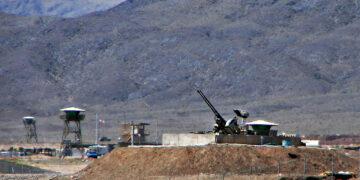
Featuring Rosemary Kelanic
October 16, 2025
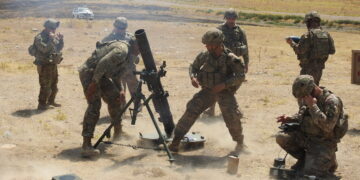
Featuring Daniel DePetris
October 8, 2025
Events on Syria

